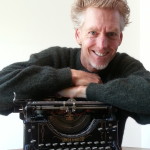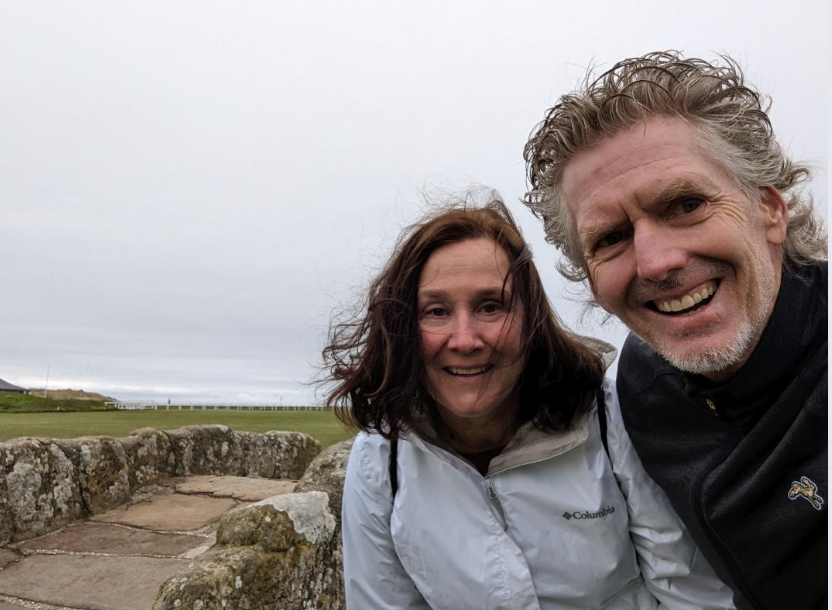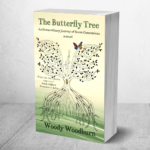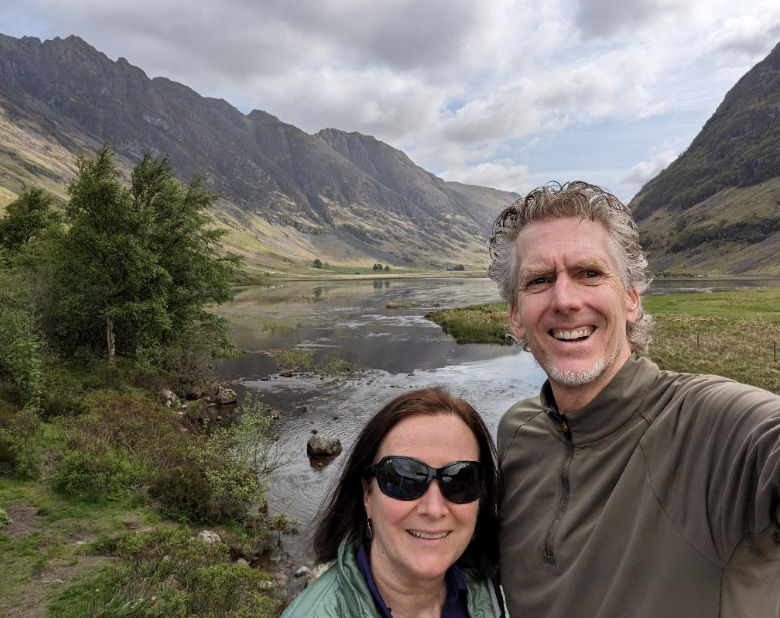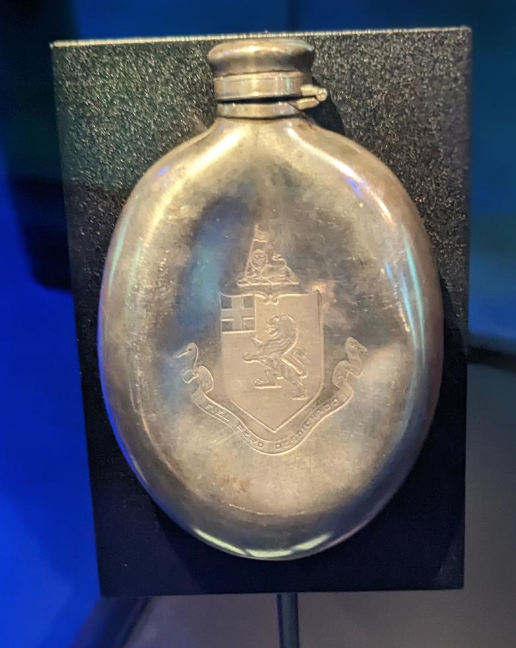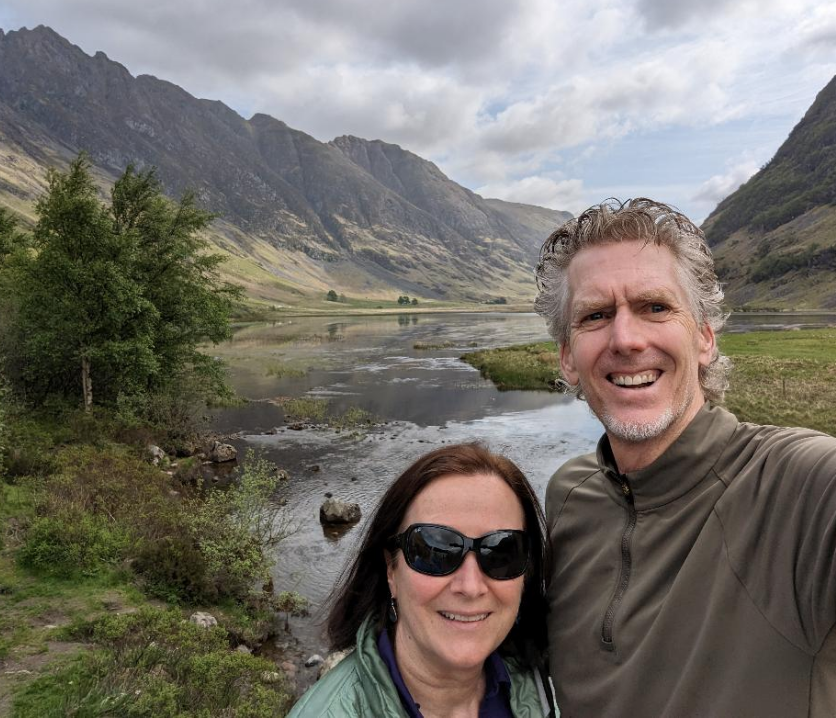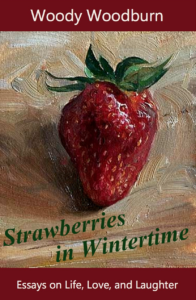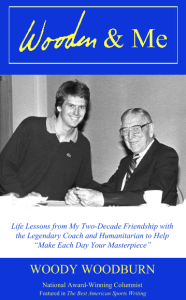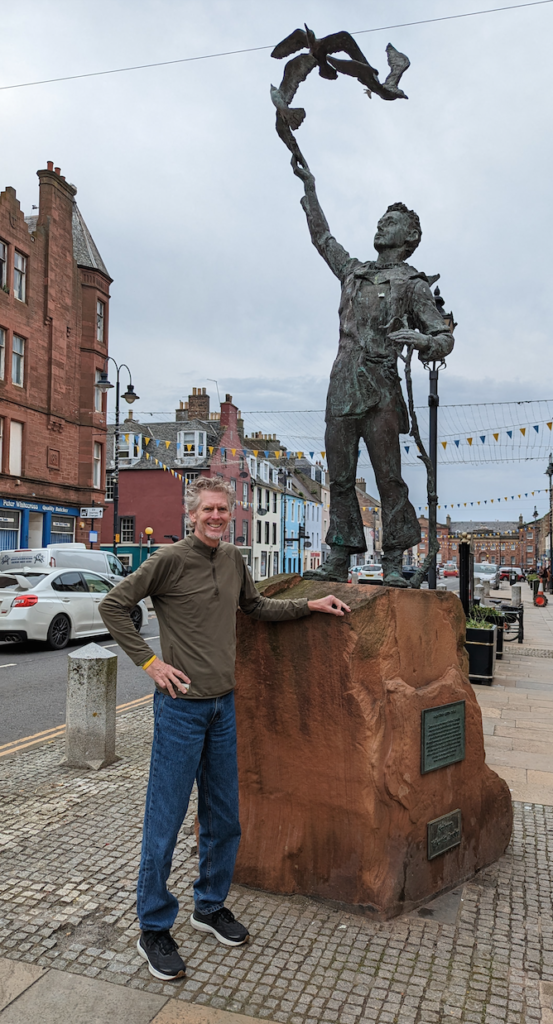Woody’s new novel “The Butterfly Tree” is available at at Amazon (click here) and orderable at all bookshops.
*
At St. Andrews Golf Club serendipity smiled and the normally gelid seaside weather on Scotland’s east coast grinned warmly as well.
That is to say the sun was out and the wind blowing off the North Sea was only strong enough to steal a hat, or snap a kite string, not carry away big dogs and small children as is the norm. Nonetheless, even wearing a zippered pullover pulled over a sweater, my teeth chattered and I felt pity for golfers who play here when half-frozen raindrops blow sideways and sting faces like angry bees.
By happy chance, My Better Half and I visited the iconic “Old Course” on a Sunday. Turns out that the original church of golf, established 1554, is closed to golfers on the Sabbath and open to the general public, even tourists from America, to stroll at their leisure.
And so it was we joined a hundred people or more wandering the famous links, and a couple dozen dogs too, the latter all off leash and free to do their business with nary a plastic bag in any owner’s possession, raising the question: what’s the lift-and-clean rule for a terrier tainted Titleist?
MBH and I walked 12 strokes worth of holes out and back, three par-4s, including crossing the landmark Swilcan Bridge on the 18th fairway. Walked them in even par, I suppose, considering neither one of us lost a shoe—or one another—in the carnivorous gorse.
The fairway grass, fescue to be specific, is as hardy as steel wool and thus the weekly Sunday stampedes cause no visible damage. Too bad, perhaps, because anything that makes the Old Course play more difficultly is “brilliant” in the Scots’ minds.
All the same, traipsing around—even the putting greens are not off limits—seemed as unimaginable as touching the Mona Lisa. It was like enjoying a picnic on Wimbledon’s venerable Centre Court.
Speaking of lunch, the clubhouse is also open to the general public and so MBH and I grabbed a bite at the Tom Morris Bar & Grill where we enjoyed a picture-window seat overlooking the course and I savored a “Tom’s Burger” with grass-fed Scotch beef that was second to none I have ever tasted. Its juicy messiness proved a stroke of good luck as it necessitated washing up…
…which I did, I kid you not, in the locker room used by legendary golfers during the British Open. The dark wooden lockers are numbered with polished brass plates and an attendant kindly guided me to those specifically reserved for Jack Nicklaus and Arnold Palmer and Tiger Woods.
One final unexpected thrill presented itself. The Old Course runs adjacent to the North Sea alongside the very beach, West Sands, where the quintessential scene in “Chariots of Fire” was filmed showing the British Olympic track team running in slow-motion, barefoot all, splashing through shallow surf.
Although I had gone for an 11-mile run earlier in Edinburgh, in shoes, I was inspired to add a bonus mile just for the memory of it. Up the beach once and back I jogged, not barefoot but seemingly in slow-motion thanks to soft sand and hard blustery winds pushing me sideways. In my mind’s ear I heard the unforgettable Oscar-winning musical score by composer Vangelis Papathanassiou.
Despite the biting chill, I had company. A rookery of novice surfers, wisely wearing full wetsuits with hoods and booties, was taking a group lesson. Their instructor, however, apparently half-Scot and half-seal, rode the waves attired in boardshorts only.
Next week: An Irish version of Willy Wonka’s Golden Ticket.
* * *
Essay copyrights Woody Woodburn
Woody’s new novel “The Butterfly Tree” is now available in paperback and eBook at Amazon (click here), other online bookstores, and is orderable at all bookshops.
*
Woody writes a weekly column for The Ventura County Star and can be contacted at WoodyWriter@gmail.com. Follow him on Twitter and Instagram at @woodywoodburn.

